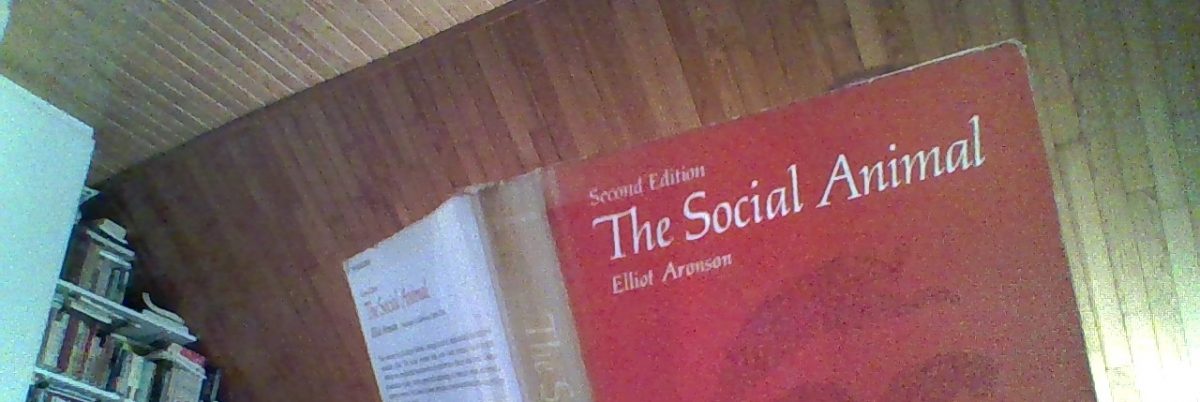
Jan Blommaert
It was late January 2017. Donald Trump had just been inaugurated, and his Press Secretary Sean Spicer, in his first press briefing, had referred to record numbers of spectators at the event. This claim was swiftly and conclusively debunked. NBC submitted this “demonstrable falsehood” to senior White House staff member Kellyanne Conway, and her reply became the stuff of legends. According to Conway, Spicer had merely offered alternative facts, not falsehoods. This statement marked the beginning of what has, in the meantime, become an institutional discourse tradition: confrontational debates over the truth, over fake news, over what constitutes reality-as-we-know-it.
For many, the very term “alternative facts” is an oxymoron, since facts are absolute. Either things are facts, or they are not, and relativism when it comes to factuality runs counter to most of our cultural assumptions about what constitutes knowledge and truth. So here is the question: how did Conway come up with this oxymoron? And how come people believe such things?
Rational versus reasonable
Part of the answer is general, another part is specific. Let me start with the general part. Garfinkel and other interactionists – think of Everett C. Hughes, Aaron Cicourel and Erving Goffman – will be useful in formulating this general part.
The point of departure is a fundamental assumption used in ethnomethodology and related branches of interactionism: in their everyday conduct, people continuously try to make sense of what goes on around them, working from details and singular events towards larger frames in which such details and events can be made to fit and become meaningful, recognizable as instances of social order. We are sense-making creatures seeking coherence – that is the summary of this assumption. We seek such coherence by trying to fit small things into bigger frames. And in thus seeking coherence, we are reasonable. This latter term, however, demands utmost precision and clarity.
First, being reasonable should be distinguished from being rational. In fact, we will see below how critical this distinction is theoretically as well as in the political, ideological and sociocultural practices I shall mention later.
Being rational is the form of orientation to knowledge and truth we have inherited from Enlightenment and modern science: it stands for a “facts only” approach and for strictly logical forms of argument in which disciplined rules of hypothesis-building and evidence support are being employed in explaining issues or answering questions. Such answers are conclusive and yield facts, the status of which is absolute. This rational orientation to knowledge comes with an attitude we call “objectivity”, with a degree of detachment and disinterestedness in making arguments. In our culture, it is widely seen and institutionally embedded as a superior orientation to knowledge (which is why Habermas, for instance, saw it as the key to the construction of a healthy democratic public sphere). Facts, rationally established, are also disembodied items, not tied to people or communities but transcending them. Facts are usually “hard”.
Being reasonable is a much less precise orientation to knowledge, and – not to put too fine a point on it – “reasonable” stands for “credible”, something we and our interacting others are ready to accept as true, correct, valid, and to which we are ready to be held accountable. It is undoubtedly a form of reasoning in which explanations are offered, but it does not rely on a codex of disciplined and disciplinary rules. Garfinkel coined the term “ethno-methods” to denote such forms of being reasonable: people in their everyday lives build and use “theories” of how things are and should be, and these theories structure their conduct and interactions with others. Such theories are “subjective” and often irrational, even if they can be experienced as unshakably true, as “visibly rational” (to quote Garfinkel). Culturally, however, they are perceived as inferior to rational orientations towards knowledge: they are the stuff of “folk” theorizing, “opinion” and “common sense”. This is “soft” stuff.
It is important to realize that both orientations to knowledge, the rational as well as the reasonable, share crucial features. Both are ways of making sense of reality-as-it-occurs-to-us, and both do so by establishing explanatory patterns we call ergoic – from Latin “ergo”, meaning “because” or “therefore”. Ergoic patterns are patterns of explanation in which small things – evidence – are explained in terms of bigger and more general propositions – theory. We observe a phenomenon or event, and it can be explained as related to a larger and more general pattern: it is what it is because (ergo) it fits into the larger pattern.The difference between both orientations to knowledge is in how ergoic patterns can be and are being made, the conditions under which ergoic patterns are being ratified: strict rules of method apply to rational orientations, while such rules are absent (or at least hugely less rigorous) in reasonable orientations.
As Garfinkel and others explained at length, we are reasonable most of the time and rational, in the sense specified earlier, whenever we feel we need to be. Being rational, one could say, is a historically specialized form of being reasonable; the fact that we judge it to be the superior orientation to knowledge does not automatically make it into the most widely practiced one. After all, Mr. Spock came from another planet.
This is the point where we can become more specific and return to Mrs. Conway’s world of alternative facts.
Making the rational unreasonable
Mrs. Conway used her notion of alternative facts as a rebuttal of what the NBC anchor submitted to her as “demonstrable falsehoods” – the ridiculously inflated numbers of spectators at Trump’s inauguration. The NBC anchor, we can see, made his claim from within a rational orientation to knowledge. Facts are facts; no bargaining can be admitted when such facts are “demonstrably” established, and other accounts are in the same move conclusively and in absolute terms established as non-facts, as fiction. No two ways about it: it’s about proof, not about belief.
Mrs. Conway’s baffling reply (obviously irritating the NBC anchor) marked a moment in a political evolution in the US, the origins of which are older and instances of which more widely disseminated. Her statement marked the moment when that evolution became institutionalized, when it became the voice of the White House. And the evolution it marked is the rise of New Right-wing metapolitics. In what follows, I will describe four crucial features of such metapolitics.
1. Disqualify the rational
The first feature is the consistent disqualification of the rational as the superior orientation towards knowledge. This is done by a systematic denial of the sociocultural connotations we attribute to the rational: its status as objective, disinterested, detached voice serving as a critical instrument for democratic political systems. These connotations are replaced by their exact opposite: a conspiracy theory.
The conspiracy theory can be quickly summarized. Rational “facts” are a tool of oppression, a creation of a Left-wing elite (sometimes called “cultural Marxists”) aimed at suppressing and dismissing – here it comes – alternative facts. These alternative facts are experienced by “ordinary people”. But they never make it to the headlines of the mass media, the textbooks used in training university students, or policy papers, since the media, the world of expertise and the major political instruments are all in the hands of this over-represented “Left-wing” elite. Rational facts are, consequently, lies maliciously spread by these elite actors, while the facts experienced by “ordinary people” are ridiculed, their reality dismissed as fiction.
Consequently, it is not those who are officially licensed to be rational, define facts and non-facts, and speak the truth who should be listened to. Quite the contrary: the truth is in our hands, and we are those who are truly rational.

Another convenient consequence of this conspiracy theory is that absence or scarcity of evidence does not cripple one’s version of the truth – it confirms it, since facts are deliberately withheld from the “ordinary people”. Similarly, arguments are immune to rebuttals using rational, “objective” and “hard” facts, since such facts are … deliberately constructed lies, attempts at thought control or brainwashing, or political correctness.
The connection between democracy and the rational orientation to knowledge, inherited from Enlightenment and institutionalized in education, media and politics, has been disqualified. In its stead, the reasonable orientation to knowledge moves towards the center of what is seen as a democratic system. It moves from “soft” to “hard”, to something unshakable.
To this disqualification of what we can call “institutional” rationality, another extremely powerful feature needs to be added.
2. Moralize the truth
We have already seen how the disqualification of rational orientations to knowledge included a focus on the actors: “facts” were to be dismissed because they were produced by the wrong people. The disembodied nature of rational facts, thus, is replaced by a profound and analytically crucial merger of knowledge, person, and morality. The truth, so it is claimed, is in the hands of honest, decent people. The truth, in other words, is no longer lodged in “objective” facts, the status of which cannot be challenged in random ways. It is lodged in concrete people who embody the right moral values. The truth becomes a matter of identity.
Of course, the truth is and has always been a profoundly moralized concept, which is why our vocabulary of terms for handling the truth is deeply moral in nature and projects moralized identities upon people. When we speak the truth we are “honest”, “sincere”, “reliable”, “truthful” and so on; when we don’t we are “liars”, “dishonest”, “untrustworthy”, “false”, “corrupt” and so forth. A term such as “fake news”, consequently, is not just a judgment of a particular chunk of knowledge; it includes a moral judgment of its actors, of those who produce, believe and circulate it.

When the truth is moralized, we are moralized, and so are our actions. When we wage a struggle, the struggle is not a vulgar one – for power or money – but a struggle for values. After all, we are fighting for the truth, for a society governed by the truth. Our struggle, thus, demands all that is attached to moral greatness: courage, determination, sacrifice, discipline, persistence. Which is why such struggles are often imagined not merely as wars but as crusades.

Such imagined crusades can take ludic shapes, as in the meme just shown. But they can also be deadly serious, as in the case of the Norwegian mass murderer Anders Behring Breivik.

Breivik, as we know, described a new Knights Templar order in his long manifesto, reaching back to the early crusades. And he assassinated about 70 “liars” and “traitors”: members of a social-democratic youth movement in Norway. Crusades are real.
3. Do the ergoic work
We have seen earlier that ergoic patterns are at the core of what “being reasonable” actually means; we have also seen that it consists in relating small things – incidents, events, phenomena, occurrences – to larger patterns, to a “theory”.
This theory, we also saw, does not require the disciplined methodical underpinning of a rational theory. Absence of evidence simply constitutes proof of its validity; scarcity or falseness of evidence as well. What is required is (a) a Grand Narrative and (b) some evidence. A widespread Grand Narrative is that of Islam as a hostile religion, and of Muslims as engaged in a Jihad against “us”. This highly elastic proposition is directly connected to another very flexible theme: immigration. Immigration is always “mass importation” of “potentially dangerous enemies” who will eventually exterminate the populations of the Christian West.

(Translation: Fight with me… MORE MORE MORE: truth; no more political correctness; freedom of speech, our highest good; renewed sovereignty, no more EU-puppet; closed borders, no more Muslim migrants. LESS LESS LESS: ban Islam, a political ideology of conquest; get rid of the Qur’an, a book replete with hatred towards you; close al mosques, centers for jihadists; no more Islamic schools, poisoning. A Free Netherlands, Our Netherlands, Vote PVV, Party of Freedom)
We shall all perish because of the complicity of our leading Left-wing elites, who are actually (and especially through transnational systems of governance such as the EU, the UN or NATO) conspiring with the Arabs against us, in attempts to Islamize Europe. These elites, therefore, are our enemies. We shall perish through genocidal Jihad, and/or through demographic genocide – the gradual but steady increase of Muslim populations in the West, eventually turning “us” into a minority.

Evidence for this Grand Narrative can be found in the smallest anecdotes relating to Muslim intolerance, aggression or cultural-religious assertiveness: women wearing the hijab, halal food in mainstream supermarkets, the use of Arabic as a publicly displayed language, Muslims complaining about violations of their rights and freedom of religion, Muslims attacking or verbally abusing non-Muslims, Western politicians meeting their Middle-Eastern counterparts or giving speeches at Muslim religious events (often qualified as soumission, following the title of a novel by Houellebecq) – there is no limit to what can be used as “facts” to prove the theory, and if there is a shortage of such facts, they can be manufactured. Here is a short list of such hoaxes retweeted by Donald Trump.

The latter takes us to the fourth and final feature.
4. Use all the affordances of social media
Social media are excellent platforms for this kind of ergoic work. The economy of circulation on social media is characterized by speed, frequency and intensity, and quick ergoic patterns can be established by exploiting these affordances through short, often visual (or visually-supported), messages such as memes or gifs, or through the crisp and concise reiteration of the Grand Narrative as shown in some examples above. Veritable saturation bombardments can be performed this way.
Here are some examples, and note the ergoic patterns we observe in them.




The world of Ergo-ism.
Such ergoic patterns constitute “alternative facts”. They form a self-contained “truth”, immune to any form of factual refutation, for such refutations are – within this world of alternative facts – seen as conclusive evidence of the truth. Grounded in everyday forms of reasoning and sense-making, they have explanatory power, they create coherence in how people view their world, and they define individual and group identities. Supported by an infrastructure of social media offering unique affordances tailor-made for such quick-and-dirty explanations, they become extraordinarily persuasive – persuasive enough to turn electorates toward candidates and parties embodying the moralized “true” truth.
We live in a world where such ergo-ism defines the codes and standards of mass information and public debate. Whether this development is likely to make us “great again” is highly questionable. It is the topic of intense debate as well. And one element in such debates is inevitable: it is insufficient to simply disqualify such forms of ergoic work as a new form of obscurantism, as an endless supply of nonsense and unbelievable inferential quantum-leaps. We are facing here the rationality of our times. or better: the rationalities of our times, for there are multiple rationalities competing in the public sphere and reshaping what we used to call Modernity. Yes, the very term “alternative facts” could qualify as the ultimate marker of post-Modernity, since it turns something absolute – the rational orientation to knowledge – into a relative thing co-existing alongside a range of alternative ones. But even when we admit that we should address the puzzling moral absolutism with which such alternative versions are held to be the one-and-only truth. This is, if anything, an absolutist relativism – in itself quite an unbelievable thing.
(This short note is part of the Online with Garfinkel project.)
(For an elaborate example of ergoic framing in the sphere of QAnon, click here.)

